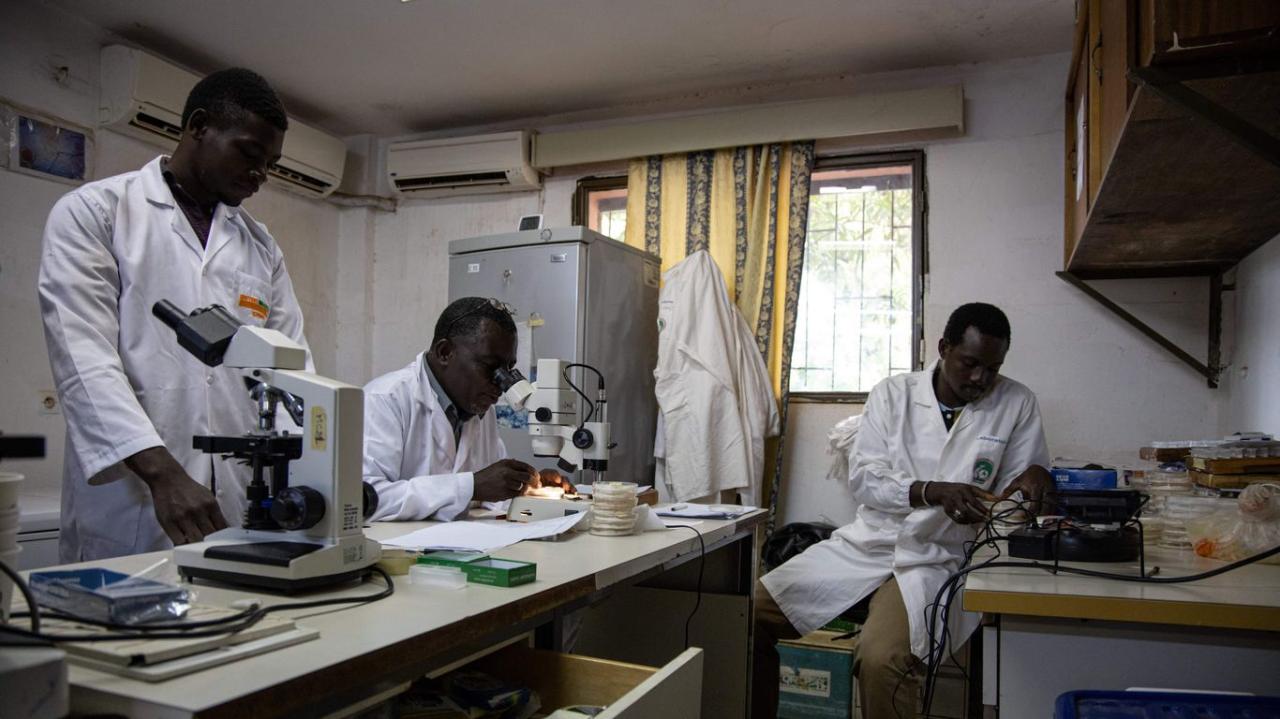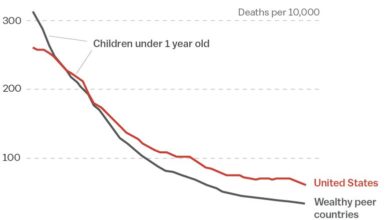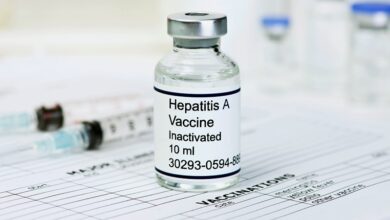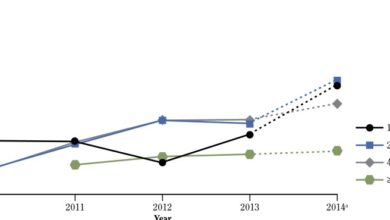
Why some countries can get rid of malaria? This journey delves into the complex interplay of historical context, socioeconomic factors, environmental influences, public health interventions, technological advancements, and case studies to understand the multifaceted reasons behind successful malaria eradication efforts. From historical attempts to modern innovations, we’ll uncover the strategies that have proven effective in specific regions.
Historical records reveal that effective malaria control has been a long and winding road, involving significant advancements in public health infrastructure, treatment, and our understanding of the disease. The evolution of these efforts highlights the importance of not only scientific breakthroughs, but also the crucial role of socioeconomic factors like poverty, healthcare access, and education.
Historical Context
Malaria, a debilitating disease caused by parasitic infection, has plagued humanity for centuries. Its impact has been profoundly uneven across the globe, varying based on factors like climate, geography, and societal development. Understanding the historical context of malaria’s prevalence and the attempts to control it is crucial to comprehending the challenges and successes in eradicating the disease in some regions.
Malaria’s Global Prevalence Through Time
Malaria’s distribution has been shaped by environmental conditions and human migration. Early civilizations, particularly in regions with high temperatures and humidity, experienced significant malaria burdens. Historical records suggest malaria’s presence in ancient Egypt and other parts of the world, with symptoms described in various ancient texts. The disease’s impact on human populations varied greatly depending on the region’s ecological factors and the population’s access to resources for prevention and treatment.
Historical Attempts to Control Malaria
Early efforts to control malaria were often localized and focused on preventative measures. In some regions, the draining of swamps and the construction of protective barriers were employed to reduce mosquito breeding grounds. These practices, while rudimentary, reflected an understanding of the connection between mosquitoes and the disease. As scientific understanding of the disease’s life cycle evolved, so did the approaches to control.
The development of antimalarial drugs, such as quinine, marked a significant advancement, providing a treatment option, albeit with limitations.
Evolution of Understanding Malaria Transmission and Treatment
The understanding of malaria transmission evolved significantly over time. Early theories about the disease’s spread were often inaccurate, but the identification of the parasite and the role of the mosquito vector marked a crucial turning point. This knowledge was essential in developing targeted control strategies. The discovery and refinement of antimalarial drugs, like chloroquine and artemisinin-based combinations, significantly improved treatment options and mortality rates.
However, the emergence of drug resistance has presented a continuing challenge to effective treatment.
Role of Public Health Infrastructure in Malaria Control
Public health infrastructure plays a critical role in malaria control. Well-organized systems for surveillance, diagnosis, treatment, and vector control are essential for containing outbreaks and preventing the spread of the disease. The development of robust public health systems, including reliable diagnostic labs and trained healthcare workers, correlates strongly with the success of malaria control programs.
Contrasting Malaria Eradication Efforts
| Country | Era | Strategies | Success/Failure |
|---|---|---|---|
| Italy | 1920s-1940s | Drainage of wetlands, public health campaigns | Partial success, but malaria remains a problem in some areas |
| United States | Early 20th century | Drainage of swamps, mosquito control, antimalarial drugs | Significant reduction in malaria prevalence, but not eradication |
| Greece | 1950s-1970s | Targeted mosquito control, antimalarial drug distribution | Significant success, malaria eliminated from many regions |
| Brazil | 1960s-1980s | Vector control, antimalarial drug distribution, public health campaigns | Significant success, malaria prevalence reduced substantially |
Socioeconomic Factors: Why Some Countries Can Get Rid Of Malaria

Poverty and inequality often create fertile ground for the spread of malaria. Limited access to resources, including clean water, sanitation, and adequate housing, can exacerbate the problem. These conditions frequently accompany a lack of investment in robust public health infrastructure, further hindering the ability to effectively combat the disease. A deep understanding of these socioeconomic factors is crucial for developing comprehensive strategies to eradicate malaria.Malaria’s prevalence is intrinsically linked to socioeconomic conditions.
The disease disproportionately affects vulnerable populations in low-income communities, highlighting the urgent need for integrated development strategies that address both poverty and public health.
Stronger healthcare systems, proactive mosquito control, and consistent preventative measures are key to eradicating malaria in certain nations. But, while pondering these factors, I’ve also been wondering about the nutritional value of spinach dip – is it actually good for you? The answer, according to this insightful article on is spinach dip good for you , might surprise you! Ultimately, investing in robust public health initiatives, like those used in malaria eradication programs, is crucial for overall well-being.
Poverty and Malaria Prevalence
Poverty is strongly correlated with higher malaria prevalence. Limited access to essential resources like clean water and sanitation allows for the breeding of mosquitoes, vectors of the disease. Poor housing conditions and overcrowding can also increase exposure. The lack of financial resources often restricts access to preventive measures and effective treatment, leading to a cycle of poverty and illness.
For example, in rural communities with limited income, families may be unable to afford mosquito nets or other preventative measures, leading to higher infection rates.
Access to Healthcare and Malaria Control
Access to quality healthcare plays a critical role in malaria control. Early diagnosis and prompt treatment are essential to prevent severe complications and fatalities. Inadequate healthcare infrastructure and a shortage of trained healthcare professionals in affected regions significantly hinder effective intervention. Limited access to diagnostics and medications further complicates the issue. For instance, a community lacking access to hospitals or clinics may have limited access to antimalarial drugs, leading to delayed treatment and potential disease transmission.
Education and Awareness Campaigns
Education and awareness campaigns play a vital role in malaria prevention. Community-based programs can educate individuals about the disease’s transmission, preventive measures, and the importance of seeking timely treatment. Improved knowledge empowers communities to actively participate in disease control efforts. For example, campaigns highlighting the proper use of mosquito nets and the importance of draining stagnant water can significantly reduce mosquito breeding sites.
Effectiveness of Economic Development Strategies, Why some countries can get rid of malaria
Various economic development strategies impact malaria control. Strategies focused on sustainable agriculture, improved sanitation, and access to clean water can have a substantial positive impact. Investing in education and vocational training empowers communities to earn a living and improve their overall well-being, ultimately reducing the burden of malaria. For example, initiatives promoting sustainable agriculture practices can improve food security and income levels, reducing poverty and improving health outcomes.
Socioeconomic Indicators and Malaria Rates
| Country | Indicator | Level | Malaria Rate |
|---|---|---|---|
| Nigeria | Income per capita | Low | High |
| Uganda | Access to sanitation | Limited | Moderate |
| Tanzania | Access to healthcare | Poor | High |
| Rwanda | Access to education | Improving | Low |
| India | Rural poverty rate | High | Moderate |
Note: Data in the table represents illustrative examples and does not reflect exhaustive research. Actual data may vary. Malaria rates are represented in general terms (High, Moderate, Low) for simplicity.
Environmental Factors
The environment plays a crucial role in the transmission of malaria. Changes in temperature, rainfall patterns, and vegetation profoundly affect the mosquito’s life cycle and, consequently, the spread of the disease. Understanding these environmental dynamics is essential for developing effective control strategies. The interplay between environmental factors and malaria transmission is a complex one, and it’s not simply a matter of identifying a single cause-and-effect relationship.Environmental factors, such as temperature and humidity, are intricately linked to the proliferation of malaria vectors.
These factors influence the mosquito’s breeding habits, the duration of their life cycle, and ultimately, their ability to transmit the parasite. Similarly, the presence of suitable breeding grounds significantly impacts the mosquito population density, increasing the risk of malaria transmission. Furthermore, environmental management practices and land use changes can directly impact the spread of malaria by altering mosquito habitats and the overall environment’s suitability for transmission.
Impact of Climate Change on Malaria Transmission
Climate change is significantly altering temperature and rainfall patterns globally. Warmer temperatures can extend the breeding season for mosquitoes, increasing the duration during which they can transmit the malaria parasite. Changes in rainfall patterns can also affect the availability of breeding sites, leading to either increased or decreased mosquito populations depending on the specific region. For example, increased rainfall in some areas might create more stagnant water, providing ideal breeding grounds for mosquitoes.
Conversely, prolonged droughts in other areas might diminish these breeding grounds. This variability in climate conditions creates challenges for malaria control programs.
Role of Mosquito Breeding Grounds in Malaria Spread
Mosquito breeding grounds are essential for the proliferation of the malaria vector. These grounds typically consist of stagnant water bodies, where the mosquito larvae develop and mature. Factors such as water availability, water quality, and vegetation surrounding these breeding sites significantly influence the mosquito population. The presence of abundant, stagnant water, particularly in areas with high human population density, poses a substantial risk for malaria transmission.
For instance, improperly maintained irrigation systems, discarded tires, and even flower pots can serve as breeding grounds for mosquitoes, increasing the risk of malaria transmission in the surrounding community.
Environmental Management Practices Affecting Malaria Control
Effective environmental management practices can play a crucial role in malaria control. Strategies like removing stagnant water sources, improving sanitation, and promoting appropriate waste disposal can significantly reduce mosquito breeding grounds. Community involvement and education on proper waste disposal and water management practices are essential components of these programs. Moreover, vector control measures, such as using larvicides or insecticides to target mosquito breeding grounds, can also be effective.
Eliminating malaria in certain regions often boils down to a combination of factors like robust public health initiatives and effective vector control. Interestingly, similar meticulous research, like research shows ADHD onset in childhood only , demonstrates the importance of early intervention in understanding and addressing complex health issues. This approach to understanding the onset of conditions like ADHD can, in turn, provide valuable insights into how to best target and eliminate diseases like malaria.
Land Use Changes and Malaria Transmission
Changes in land use, such as deforestation and urbanization, can significantly alter the environment, impacting malaria transmission. Deforestation can create new breeding grounds in areas previously covered by vegetation. Urbanization can increase the concentration of human populations in areas with limited access to sanitation and water management, increasing the risk of malaria transmission. These changes can lead to a rise in malaria cases in previously unaffected areas.
For example, the expansion of agricultural land into previously forested areas can disrupt the natural drainage patterns, leading to the formation of stagnant water pools that serve as breeding grounds for mosquitoes.
Relationship Between Environmental Factors and Malaria Cases in Different Regions
| Region | Environmental Factor | Impact on Malaria |
|---|---|---|
| Sub-Saharan Africa | Increased temperature and rainfall variability | Expansion of malaria transmission zones, increased transmission intensity |
| South America | Deforestation and agricultural expansion | Creation of new mosquito breeding grounds, increased malaria cases in previously unaffected areas |
| Southeast Asia | Increased urbanization and stagnant water accumulation | Higher concentration of mosquitoes in urban areas, increased transmission risk |
| South Asia | Flooding events and waterlogging | Creation of large-scale mosquito breeding grounds, substantial increase in malaria cases |
Public Health Interventions
Public health interventions play a crucial role in controlling and eliminating malaria. These strategies, encompassing vector control, early diagnosis and treatment, and robust public health programs, are essential components in the fight against this debilitating disease. Effective implementation, coupled with international collaboration, significantly contributes to reducing malaria’s impact and improving global health outcomes.A multifaceted approach is necessary to combat malaria effectively.
Interventions target the disease’s transmission cycle, from the vector to the human host, and prioritize community engagement and education. This holistic strategy ensures sustainability and long-term success in malaria control and elimination efforts.
Effective Vector Control Strategies
Vector control is paramount in reducing malaria transmission. Targeted interventions focus on disrupting the vector’s life cycle and limiting its interaction with humans. Insecticide-treated nets (ITNs) are a cornerstone of this approach. These nets provide a physical barrier against mosquitoes, preventing them from biting and transmitting the parasite.
- ITNs are highly effective when used consistently and appropriately. Proper use involves ensuring nets are hung correctly, are regularly treated with insecticide, and are changed or repaired as needed.
- Indoor residual spraying (IRS) involves applying insecticides to the interior walls of houses. This creates a residual insecticide effect, reducing mosquito populations in the immediate environment.
- Larviciding is the process of eliminating mosquito larvae in breeding sites. This can involve treating water bodies with larvicides or implementing environmental management strategies to reduce mosquito breeding grounds.
Importance of Early Diagnosis and Treatment
Prompt diagnosis and treatment of malaria cases are vital for preventing severe illness and limiting transmission. Early intervention with appropriate antimalarial medications significantly reduces the risk of complications and death.
- Rapid diagnostic tests (RDTs) are crucial for timely diagnosis. These tests allow healthcare providers to quickly identify malaria infections, enabling prompt treatment.
- Treatment with effective antimalarial drugs, such as artemisinin-based combination therapies (ACTs), is essential for curing the infection and preventing its progression.
- Proper medication adherence is critical for successful treatment outcomes. Clear instructions and support systems are necessary to ensure patients complete the full course of medication.
Implementation of Public Health Programs for Malaria Control
Public health programs are multifaceted, incorporating community engagement, education, and infrastructure development. Effective programs often combine vector control, diagnosis, and treatment.
- Community engagement and education are critical to ensure program success. Involving local communities in program planning and implementation fosters ownership and sustainability.
- Training healthcare workers in malaria diagnosis and treatment protocols is vital. This ensures consistent and accurate diagnosis and treatment.
- Strengthening health infrastructure, including diagnostic laboratories and treatment facilities, improves access to care and supports effective program implementation.
Role of International Collaborations in Malaria Eradication
International collaborations are essential for sharing resources, knowledge, and best practices in malaria eradication efforts. Global partnerships can leverage expertise, funding, and technical assistance to accelerate progress in affected regions.
- Sharing best practices among countries with successful malaria control programs allows for the adaptation and implementation of effective strategies.
- International organizations play a crucial role in providing financial and technical support to developing countries.
- Joint research initiatives and knowledge sharing among researchers accelerate scientific discoveries and advancements in malaria control and elimination.
Examples of Successful Public Health Campaigns for Malaria Prevention
Numerous countries have implemented successful public health campaigns to reduce malaria incidence. These campaigns often combine multiple strategies and prioritize community engagement.
- The use of ITNs in sub-Saharan Africa has demonstrated a substantial reduction in malaria cases. Consistent and widespread use has significantly impacted malaria prevalence.
- Successful community-based education programs in Southeast Asia have emphasized the importance of early diagnosis and treatment. These initiatives highlight the importance of community involvement in malaria control.
Table of Key Public Health Interventions
| Country | Intervention | Impact | Challenges |
|---|---|---|---|
| Kenya | ITN distribution, IRS, community engagement | Significant reduction in malaria cases | Maintaining consistent ITN use, ensuring access to treatment |
| Rwanda | Improved diagnostic capacity, ACTs, training | Reduced malaria mortality | Sustaining improvements, addressing seasonal variations |
| India | Large-scale ITN campaigns, vector control, integrated health programs | Reduced malaria prevalence | Maintaining high coverage, addressing drug resistance |
Technological Advancements
Technological advancements have played a crucial role in the fight against malaria, enabling earlier diagnosis, more effective treatments, and improved surveillance. These advancements, combined with other strategies, have contributed to significant reductions in malaria cases and deaths in many parts of the world. The application of technology has proven invaluable in areas with limited resources, enabling tailored interventions and improved outcomes.Technological innovations are rapidly reshaping malaria control strategies.
From portable diagnostic tools to sophisticated surveillance systems, these advancements are empowering healthcare workers and researchers to tackle the disease more effectively. This evolution is not just about improved efficiency; it’s about creating a more targeted and sustainable approach to eliminating malaria.
New Diagnostic Tools in Malaria Detection
Rapid diagnostic tests (RDTs) have revolutionized malaria detection, offering a faster and more accessible alternative to microscopy. These tests, often performed at the point of care, provide results within minutes, enabling prompt treatment and preventing further transmission. The availability of RDTs has been instrumental in increasing early diagnosis, particularly in remote areas and resource-limited settings. Furthermore, the development of polymerase chain reaction (PCR) based diagnostic tools has improved the sensitivity and specificity of malaria diagnosis, especially for complex or mixed infections.
These advanced molecular methods are invaluable for epidemiological studies and monitoring drug resistance.
Development and Application of New Antimalarial Drugs
The development of artemisinin-based combination therapies (ACTs) has been a significant breakthrough in malaria treatment. ACTs, which combine artemisinin with other antimalarial drugs, are highly effective in suppressing the parasite and reducing the risk of drug resistance. The widespread adoption of ACTs has dramatically improved treatment outcomes and contributed to a substantial decline in malaria mortality rates in many affected regions.
Ongoing research focuses on developing new drugs that are effective against drug-resistant parasites, alongside efforts to improve the safety and tolerability of existing treatments.
Impact of Improved Surveillance Systems on Malaria Control
Improved surveillance systems play a critical role in monitoring malaria transmission patterns, identifying high-risk areas, and evaluating the effectiveness of control interventions. Geographic information systems (GIS) are used to map malaria cases, allowing for targeted interventions and efficient resource allocation. These systems also help identify emerging trends and patterns in malaria transmission, facilitating proactive measures to contain outbreaks.
Malaria surveillance systems provide crucial data for evidence-based decision-making, enabling health authorities to adapt their strategies in response to evolving situations.
Strong public health initiatives, like those used to eradicate malaria in some countries, often involve targeted mosquito control and preventative measures. However, the complexities of conditions like long haul covid type1 diabetes long haul covid type1 diabetes highlight the significant hurdles in achieving similar health breakthroughs. Ultimately, sustained commitment and comprehensive strategies are key to overcoming even the most challenging diseases, including malaria.
Comparative Analysis of the Effectiveness of Various Technologies
The effectiveness of various technologies in malaria control varies depending on the specific context and resources available. While RDTs provide rapid diagnosis, PCR offers higher sensitivity. ACTs are highly effective, but the emergence of drug resistance necessitates continuous research and development of new treatments. Improved surveillance systems, combined with data analysis, allow for better targeting of control interventions.
A comparative analysis of these technologies highlights the need for a multifaceted approach, integrating various tools and strategies for optimal results.
Impact of Specific Technological Advancements on Malaria Eradication Efforts in Different Regions
| Technology | Application | Impact | Challenges |
|---|---|---|---|
| Rapid Diagnostic Tests (RDTs) | Point-of-care diagnosis in resource-limited settings | Increased early diagnosis and treatment, reduced delays in care | Cost, training requirements, test accuracy variability |
| Artemisinin-based Combination Therapies (ACTs) | Treatment of malaria cases | Improved treatment outcomes, reduced mortality rates | Drug resistance emergence, access to quality medicines |
| Geographic Information Systems (GIS) | Mapping malaria cases and transmission patterns | Targeted interventions, efficient resource allocation, early outbreak detection | Data quality, infrastructure needs, data analysis capacity |
| Polymerase Chain Reaction (PCR) | Sensitive and specific diagnosis, epidemiological studies | Accurate diagnosis, monitoring of drug resistance, understanding transmission dynamics | Cost, laboratory infrastructure requirements, technical expertise |
Case Studies
Unveiling the success stories of malaria eradication offers invaluable lessons. Examining specific countries that have significantly reduced malaria prevalence illuminates the multifaceted approach required for combating this persistent global health challenge. These case studies highlight not only the effective interventions but also the obstacles encountered, allowing us to glean insights for future strategies and refine our understanding of the complex interplay of factors that contribute to successful malaria control.
A Case Study of Malaria Reduction in the Dominican Republic
The Dominican Republic serves as a compelling example of a nation successfully reducing malaria prevalence. The nation’s approach to malaria control involved a comprehensive strategy encompassing various factors.
- Effective Public Health Interventions: The Dominican Republic implemented comprehensive public health interventions, including large-scale insecticide-treated bed net distribution, indoor residual spraying, and community-based case detection and treatment programs. These programs were meticulously targeted, considering local environmental conditions and community demographics. The focus on early detection and prompt treatment proved crucial in limiting the spread of the disease.
- Strong Socioeconomic Factors: The nation’s commitment to improving socioeconomic conditions, such as poverty reduction and increased access to healthcare, played a critical role. These measures directly impacted the population’s vulnerability to malaria, as healthier communities tend to have stronger immune systems and better access to healthcare facilities. The improvements in living standards also created an environment more conducive to effective public health interventions.
- Environmental Factors: The Dominican Republic implemented targeted environmental management strategies. These strategies included the control of mosquito breeding sites, particularly in areas with high malaria transmission. The targeted approach allowed for a more effective and sustainable reduction of mosquito populations. Environmental initiatives were implemented alongside other public health interventions, fostering a holistic approach to malaria control.
Challenges Faced
The journey to malaria reduction in the Dominican Republic was not without obstacles.
- Maintaining Public Health Initiatives: Sustaining the momentum of public health initiatives and ensuring ongoing funding for the long-term required significant commitment. Maintaining community engagement and consistent follow-up were essential to the success of the interventions.
- Challenges in Remote Areas: Reaching remote communities and ensuring equitable access to interventions posed a considerable challenge. Innovative strategies were implemented to address these logistical barriers, ensuring that all segments of the population benefited from the available interventions.
Lessons Learned
The Dominican Republic’s experience underscores the importance of a multi-pronged approach to malaria control.
- Interdisciplinary Collaboration: Successful interventions require collaboration among public health professionals, community leaders, and other stakeholders. The active involvement of local communities proved essential for the long-term success of the interventions.
- Sustainability: Maintaining the momentum of public health initiatives and ensuring ongoing funding for the long-term are crucial for lasting success.
Summary of Case Study
The Dominican Republic’s successful malaria reduction demonstrates the power of a comprehensive strategy that incorporates public health interventions, socioeconomic factors, and environmental management. The nation’s experience emphasizes the need for sustained commitment and interdisciplinary collaboration for effective malaria control. The case study highlights that tackling the disease requires addressing the underlying social determinants of health, strengthening healthcare infrastructure, and ensuring that all communities have equitable access to essential interventions.
Key Interventions:
- Targeted insecticide-treated bed net distribution
- Indoor residual spraying
- Community-based case detection and treatment programs
- Environmental management strategies to control mosquito breeding sites
Outcomes:
- Significant reduction in malaria prevalence
- Improved community health outcomes
- Strengthened healthcare infrastructure
Final Summary

In conclusion, eliminating malaria isn’t a simple task. It requires a multi-pronged approach encompassing historical analysis, socioeconomic understanding, environmental awareness, strategic public health interventions, and innovative technologies. Successful eradication efforts, as showcased in various case studies, demonstrate the critical role of sustained commitment, tailored strategies, and international collaboration. The lessons learned from these successes can inform future efforts to combat this global health challenge.





